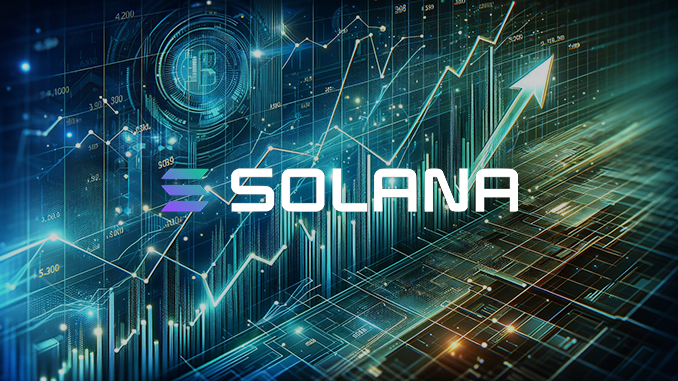
The price curve of Solana (SOL) has been pointing steadily upwards since mid-October. As a result, the discussion as to whether Solana will soon be able to compete with Ethereum (ETH) is flaring up more and more frequently. Technological details are exciting.
Even in its early days in 2021, Solana (SOL) was often dubbed the “Ethereum killer”. The reason: like Ethereum, Solana is multi-functional, but scores with high scalability and lower fees. SOL’s price curve has been demonstrating an impressive upward trend for a good six weeks now, which is why the catchy title of “Ethereum killer” has been reintroduced into the discussion.
In this context, crypto expert Thor Hartvigsen provides an analysis of the technological details of Solana on X. His most important argument: the SOL protocol allows “parallel execution” of transactions and is therefore ahead of other blockchains, which process transactions one after the other. This is important because Ethereum in particular often suffers from blockchain overload and transaction fees can quickly reach 1 US dollar or more. With Solana, on the other hand, transaction fees of significantly less than 1 cent are standard.
However, various layer-2 solutions such as Polygon (MATIC) have been established in the Ethereum ecosystem to mitigate this problem. Hartvigsen points out that Solana will build a bridge to Ethereum this year with a module called Eclipse. The Solang compiler makes it easy to integrate Ethereum DApps into Solana anyway. Or developers can use the Solana Virtual Machine Neon to integrate the Ethereum Virtual Machine (EVM). Behind these considerations is the hope that the high-revenue Decentralized Finance (DeFi) division will reorient itself towards Solana.
DeFi division at Solana shows growth
DeFi was the growth driver for Solana until the collapse of Sam Bankman-Fried’s crypto empire in November 2022. Then trust in Solana faded, Bankman-Fried turned out to be a fraud and his support for SOL turned into the opposite. Solana’s slow comeback is also due to the fact that Bankman-Fried and the FTX insolvency have been somewhat overcome. Hartvigsen points to encouraging DeFi data and projects in the Solana ecosystem. Typical use cases such as decentralized crypto exchanges (DEX), lending and liquid staking are once again finding favor with Solana. The figures from DeFiLlama actually show a doubling of DeFi capital invested in Solana across all use cases since October.
However, this should not obscure the fact that Solana is currently only in eighth place among the most important DeFi ecosystems. Around 70 percent of all SOL is deposited for staking and not actively contributed to DeFi. Ethereum, the absolute number one among DeFi ecosystems, has over 40 times more DeFi capital invested than Solana and a correspondingly low staking ratio of around 25 percent.
Conclusion: Solana’s technological advantages are only one factor
Solana is accompanied by the FTX bankruptcy and questionable supporters in its history, as the comments on Hartvigsen’s technological analysis also show. Even if some of it is based on hearsay, the psychology of the markets will play a decisive role in Solana’s future. And observers remember: when Solana DeFi was booming in 2021/22 and the main argument of scalability was tested, there were repeated hours-long network outages. Solana is currently still a long way from such endurance tests and the epithet “Ethereum killer” is therefore a buzzword.

Leave a Reply